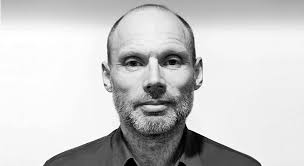
During his decade as head of technology for Goldman Sachs’ cash equities business, Jon Butler grew disillusioned with the state of sales & trading technology and its ability to support the front office of the future.
Butler describes this ideal as a fully integrated front office that maximizes the value of data; interacts and collaborates seamlessly with colleagues and clients; and gives the new generation of tech-savvy traders the ability to rapidly & safely customize platforms themselves.
“The last burst of progress was over 15 years ago; innovation has stagnated since then. Yes, execution is now 80% electronic, but front-office tools that front office staff use have not evolved, and the majority of time is still spent operating rather than generating revenue,” Butler said. “Also, an Achilles’ heel of the front office, and capital markets generally, is that it has struggled to prioritize continuous technology investment, and now the gap is perceived as too big and too expensive to close.”
Velox Financial Technology was founded by Butler and former Wall Street colleagues Jason Yan and Govind Jajoo, who between them have over 70 years’ experience managing front office technology. They realized that a major challenge of past approaches was an inability to introduce new systems, as there was no easy way to migrate from old technology to new. Velox was conceived to not only give clients cutting-edge tools, but to bridge the old and the new in an incremental, affordable away. In essence, Velox enables pragmatic technology evolution.
“They are a world-class team, and it’s exciting to see how they are shaping the next generation of front office software,” said Greg Tusar, former Partner & Global Head of Electronic Trading at Goldman Sachs and now Head of Institutional Product at digital currency exchange Coinbase.
Butler said most trading shops have a blend of in-house technology and vendor systems, many of which don’t work well together. Even if traders can plug the operational gaps in the workflow with manual copy and paste activity across Excel spreadsheets — every compliance and risk manager’s nightmare — they are still left with decade-old functionality and a business that can scale only by adding expensive people. The pressure to reduce costs and add products has been continuously building up — requiring modern systems and a new way of thinking and operating.
Velox solves this problem by empowering in-house innovation — critical if a firm is to stay competitive over the longer term. This is achieved not just with smarter tech but also with what Butler calls a front office-specific implementation of low code, and a rethink of the relationship between client and vendor. Said Butler: “Vendor relationships can often become adversarial with interests misaligned, which has stifled progress and forced firms to build too much themselves. At Velox we offer firms the ability to buy commoditized capabilities, blend them with the best of their existing systems, and build other key parts themselves in areas where they can differentiate and gain a competitive edge.”
Velox, whose name is shorthand for velocity trading, has as deep Wall Street or City experience as you’ll find at a fintech startup. They are advised by two industry heavyweights, Andrew Banhidi and Steve Grob, who have helped shape how Velox thinks about and partners with firms, Butler said. “The success of these projects really depends on overcoming firms’ idiosyncrasies, so you really need to have lived that life to see the shortfalls and a way out.”
Horsepower and Know-how
The Velox team “has the horsepower and the know-how to reshape platforms,” said Steven Bayardelle, a former equity trading head at Deutsche Bank and Bank of America Merrill Lynch.
Velox focuses on client flow trading, which Butler describes as “the sum of all fears from a design perspective. At peak times, volumes can be huge, operational certainty needs to be guaranteed, and you probably have to do last-minute releases to accommodate a client or take advantage of an opportunity.”
Using legacy sell-side technology to manage this is like mining coal with a pickaxe, Butler said. The tools were never really fit for purpose. The technical and functional challenges are unique and require solutions built for the task. “Our application platform optimizes the entire lifecycle, from design-time to run-time, across applications that — with or without humans in the loop — need to aggregate, analyze and act seamlessly on real-time order flow and data.”
ETFS Capital, a strategic investment firm focused on growth opportunities in the ETF ecosystem, invested $2.5 million in Velox in June. ETFS Capital was created by veterans of the exchange-traded fund (ETF) space, an area – alongside indices – that Velox aims to streamline. “Front office technology simply has not kept pace with markets as they are today,” ETFS Capital Chairman Graham Tuckwell said in a June announcement. “We believe Velox has the solution, the experience and the ambition to fix this industry-wide problem.”
Some firms had been able to ignore the build-up of pressure from evolving technological and competitive forces, but Butler believes that the COVID-19 shock, and the heightened emphasis on the tech stack will make it impossible to keep ignoring. “Trading has always been an arms race: who can extract the most information from data, who can create the best products, who can provide the best services for clients?”
Butler recalls Duncan Niederauer, Head of Cash Equities at Goldman Sachs and ex-NYSE CEO, describing capital markets trading as an “execution problem,” meaning that everyone knows what to do – the question is who can get it done.
“That always stuck with me,” said Butler. “What is the solution that will maximize a trading firm’s ability to execute? Velox looks at all of these as different facets of the same problem – can you aggregate the data you need, analyze it effectively, and then seamlessly act on it? By shortening the innovation cycle around these types of problems, we are positioning firms to be tomorrow’s leaders.”







